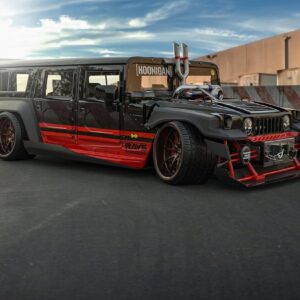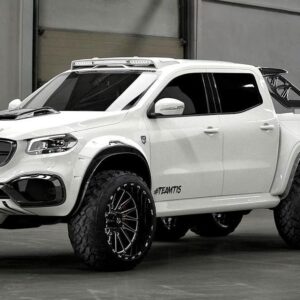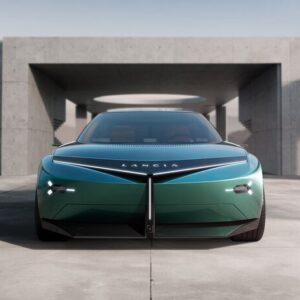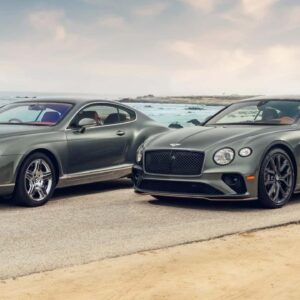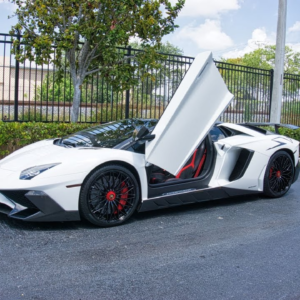The Chrysler New Yorker served as the company’s premier model from 1960 to 1996, and its name was first seen in 1938, denoting a trim level.
The 1961 model year marked the end of the full-sized Virgil Exner-designed ‘Forward Look’ finned Chrysler automobiles reminiscent of the late 1950s. They were redesigned with new slanted headlights adorning the front of the vehicle, and with taillights that were relocated from the fins to right above the bumper. 1961 was also the year that Chrysler placed 11th in the industry for sales.
Chrysler vehicles were the pinnacle of luxury and performance, proven in 1955 with the introduction of the ‘100 Million Dollar Look’ designed by Virgil Exner and the 331.1 cubic-inch V8 with hemispherical combustion chambers and 300 horsepower installed in the new 300 Series, making it the most powerful production automobile of the year. The Imperial name was used by Chrysler beginning in 1926 and represented its top-of-the-line vehicle. In 1955, the Imperial became its own separate make, positioned above the Chrysler and catering to the ultra-luxury segment. They were devoid of ‘Chrysler’ badging, but since they were sold at the Chrysler dealer network alongside Chrysler’s offerings, the marque was almost universally known as ‘Chrysler Imperial’ in the public’s mind. Between the Imperial and Chrysler vehicles, the company was capable of competing with the very best in the industry, offering performance, luxury, and elegant styling that was on par (or better) than the rest of the industry.
The styling of the late-1950s and early 1960 Chrysler vehicles changed dramatically nearly every few years. The 1956 model year’s design was known as ‘PowerStyle,’ replaced a year later by the ‘Forward Look’ that had cost the company approximately $300 million. The 392 cubic-inch Hemi V8 powering the New Yorker delivered 325 horsepower and was backed by a TorqueFlite three-speed automatic transmission. The smooth handling and ride quality was courtesy of the Torsion bar suspension system called ‘Torsion-Aire.’ Prominent styling cues included the tail fins that swept up from just behind the front doors. The early models wore single headlamps, later replaced by a quad headlamp design. New body-side trim and smaller taillights graced the 1958 New Yorker and the engine now delivered 345 horsepower. A cruise control system called ‘Auto-Pilot’ was a new feature for Chrysler vehicles in 1958.
The 1959 New Yorker gained new tailfins, and a new front-end design and the Hemi was replaced by a new 413 cubic-inch ‘Golden Lion’ (RB) V8 with 350 horsepower. Thus, 1958 was the final year the Hemi would power the New Yorker, as the new wedge head engine was lighter than the Hemi and less costly to produce.
The 1960 New Yorker continued to use a 126-inch wheelbase platform as the previous year but now had unibody construction. Styling was updated with a 300-type grille with a fine horizontal bar inset design resting above the front bumper that dipped in the center, following the contours of the grille opening. The rear tailfins flared farther outward, beginning at the middle-of-the front door and continuing to the back at an angle, emphasized by deep, round indentations at mid-body height.
Minor styling updates graced the 1961 New Yorker, with similar modifications as the Newports and Windsors. There was a straight bumper, slanted headlamps, tailfins that ended in chrome inserts incorporating small backup-up lamps, and the taillamps were repositioned into the deck lid latch panel. The tail fins design was similar to the 1960 model year, with minor changes from the middle of the front door forward.
While some of Chrysler’s competition endowed their vehicles with excessive amounts of chrome trim, the Chrysler vehicles were more restrained, including the New Yorker, which used a delicate amount to highlight and accent its elegant lines and features. Trim was used around the wheelhouse openings, the sill, and around the windshield. The grille had a horizontal grille bar design divided by seven vertical bars.
The 413 cubic-inch engine had a 10.1:1 compression ratio, a 3.75-inch stroke, and a 4.18-inch bore, a Carter four-barrel carburetor, and delivered 350 horsepower at 4,600 RPM. Body styles included a sedan priced at $4,130, a hardtop sedan at $4,260, a hardtop coupe at $4,175, and a convertible at $4,765. Chrysler was one of the last manufacturers to build a true four-door hardtop series wagon. The 1961 New Yorker six-passenger wagon was priced at $4,765 and the nine-passenger version was approximately $90 higher.
Production of the convertible, and the six- and nine-passenger wagon were exclusive, with 576, 676, and 760 examples built respectively. The most popular style was the sedan with 9,984 examples built, followed by 5,862 of the hardtop sedan and 2,541 of the hardtop coupe. The 20,399 examples built in 1961 were slightly higher than the 19,390 built in 1960 and the 16,328 built in 1959.
Following the 1961 model year, the wagons, hardtops, and sedan body styles were dropped from the New Yorker line, leaving just four-door body styles for 1962. They were devoid of tailfins and wore designs that were similar to the entry-level Newport. The New Yorker was the final Chrysler to use the 126-inch wheelbase platform. Styling updates were applied through 1964, and 1965 brought about all-new designs with all Chrysler vehicles built on a new C-body unibody platform with a bolt-on front subframe with styling by Elwood Engel inspired by his 1961 Lincoln Continental.
Chrysler would continue to use the ‘New Yorker’ name through 1997.



























